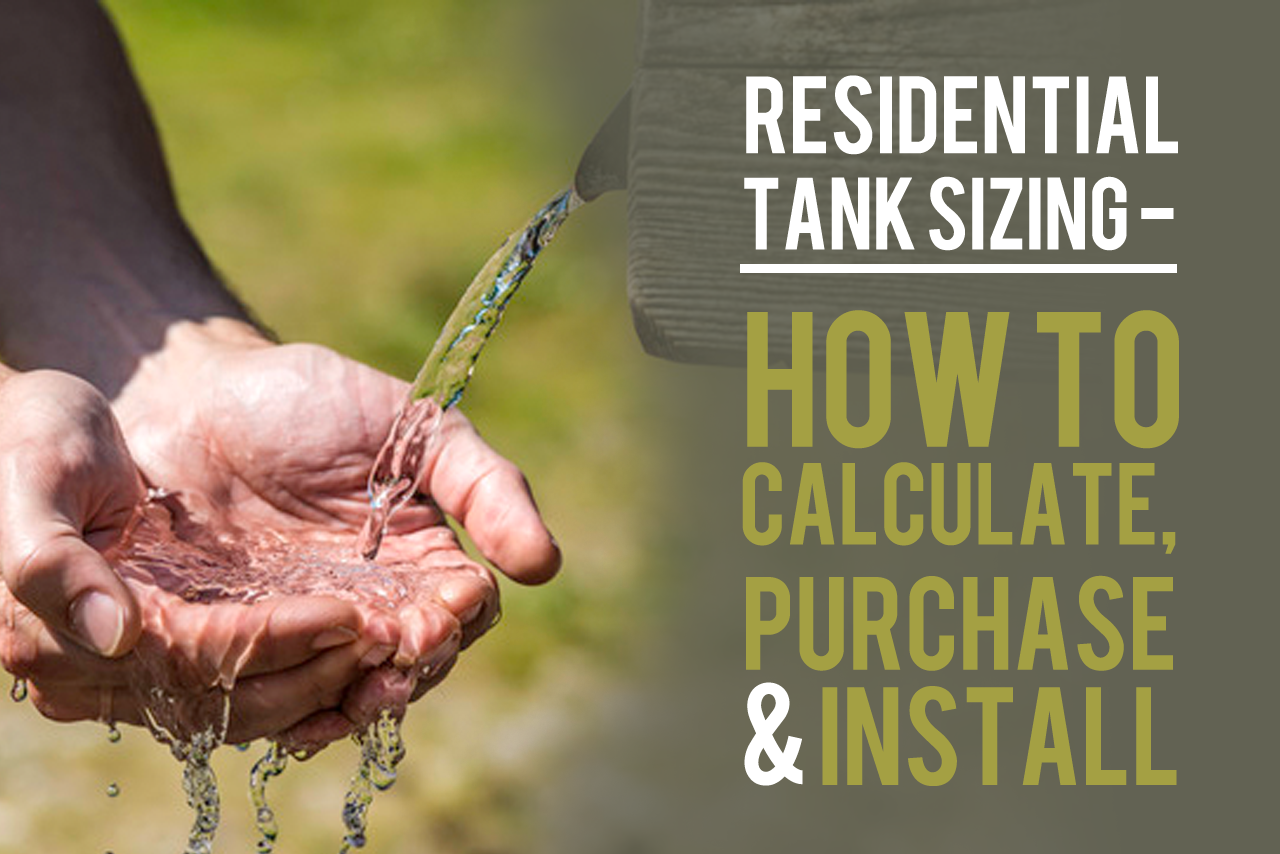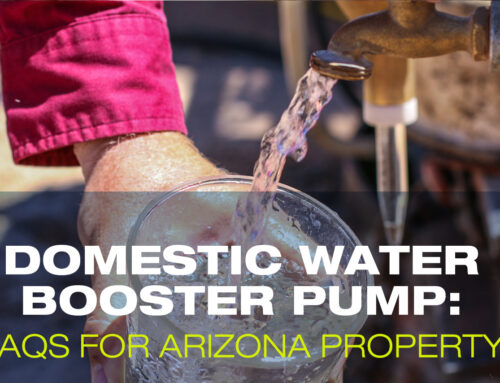
Building a new residential water well system is an incredibly detailed process.
Although ensuring you have ample water supply to access on your property might seem to be the most important item, finding a qualified company that offers residential tank sizing to help you with this process should be on top of the list.
For those that are new to this process or need a replacement water storage tank, there are a few important steps that you should follow to make this process smooth and seamless.
What Is a Water Storage Tank?
First things first, it’s important to understand what a water tank is and what options you have when determining the best one for your property.
A water storage tank stores clean water that has gone through your well’s filter system until you are ready to use it. Some storage tanks, called atmospheric tanks, use booster pumps to force out water on demand, while other tanks are pressurized. You can find water storage tanks in a wide variety of shapes and sizes to fit your residential, commercial, or agricultural needs.
Benefits of a Water Storage Tank
Not all residential wells have water storage tanks. Some rely on pressure tanks to supply daily water needs. If you are on the fence as to whether or not to install a water storage tank, here are some great benefits to consider:
-
Steady Water Supply
The main reason homeowners decide to install water storage tanks is to ensure that there is a steady, reliable flow of water to the home regardless of the water usage or environmental factors. Having thousands of gallons of ready-to-use water guarantees that you will have the amount of water you need when you need it regardless of the well’s yield, droughts, or water table fluctuations.
-
Better Water Quality
Because of the often-present iron-eating bacteria that causes a rotten egg odor in well water, many well owners opt for a water storage tank. Vented storage tanks can help release the odors, so you can enjoy a glass of water or relaxing shower without the unwanted sulfur smell. You can even add an aerator to your tank to dissipate the smell more quickly.
Storage tanks also allow sediment to sink to the bottom, so you get clearer water from your taps.
-
Less Wear and Tear on Your Pump
With just a well pump and pressure tank, your pump has to kick on frequently to keep your water flowing, which will ultimately shorten the pump’s lifespan. Having a water storage tank allows your pump to cool down between uses.
Now that we understand the importance of having a water storage tank, here are three best practices to follow in regard to residential tank sizing.
First – How to Calculate Water Tank Size
Similar in many ways to picking the right sized HVAC system, there is a specific process involved in determining the perfect sized water tank for your residential system. In general, there are three factors that must be considered when calculating water storage tank sizing:
Pump Delivery Rate:
Find out the pump’s delivery rate in gallons per minute (GPM) or liters per minute (LPM). The delivery rate of the pump will determine the volume of water that your tank can receive.
Water Well Pump Minimum Running Time:
What is the recommended minimum running time of the water well pump? Each residential water well system has a unique pump system that has a recommended minimum running time. Some submersible pumps have shorter running time than above ground pumps and vice-versa. Knowing these numbers from the manufacturer of the pump is required in order to calculate the right sized storage tank.
System Pressure Ratings:
What are the minimum and maximum cut-in and cut-out system pressure parameter ratings? A water well pump activates by gradually increasing the volume of water from a below ground tank. This is known as the cut-in and cut-off rate.
Most homeowners do not have access to this information, which is why it’s important to work with a professional water well construction company who can contact the manufacturer of your water pumps to access these vital numbers. When the numbers are received, a detailed calculation will be completed by the residential tank installation company to provide you with the recommended size.
Second – Where to Purchase the Right Sized Water Tank
Once you understand the recommended size of the replacement or new water storage tank needed, you’ll want to find a place to purchase the storage tank. There are many direct manufacturers that sell above ground storage tanks for residential applications online. The problem with ordering these systems independently is the cost of shipping and the potential issues with the return of faulty or damaged materials. To reduce the potential for mistakes, it’s always a good idea to work with the same company that completed the water storage tank calculation initially, as they will provide you with options that will fit your needs and budget perfectly.
Third – Proper Water Tank Installation Tips
Once the right tank has been ordered and has arrived, proper installation will ensure that the water tank is safe, secure, and free of debris and leaks. There are several filtration systems, hoses, and supply lines that run to and from the storage tank. Making sure each line is not contaminated and is in good shape with solid, rust-free connections is the most important thing to verify before installing any new storage tank.
Working with an experienced and professional water storage tank installation company can significantly reduce mistakes commonly made in regards to residential tank sizing and installation. It will also save you time and money, and you will ensure your system is properly installed and ready to supply your property with fresh water anytime it’s needed.
___________________________________________________
Call Pump It Up Pump Services, Inc. and let one of our professionals answer your water well questions. Call 623-582-5069 now!







Leave A Comment
You must be logged in to post a comment.